Spinach is an edible flower plant of the Goosefoot family. Spinach is a deep, leafy green vegetable filled with vitamins, minerals, and antioxidants. It can be eaten raw or cooked. Its taste depends mostly on how old the leaves are at the time of harvesting, how fresh they are and which method of preparation is used. When served raw, it tastes sweet, grassy, and weedy, compared to a slightly acidic and bitter taste when cooked. Rich in complex B vitamins as well as vitamins K, A, and many, Spinach is one of the healthy greens available to us.
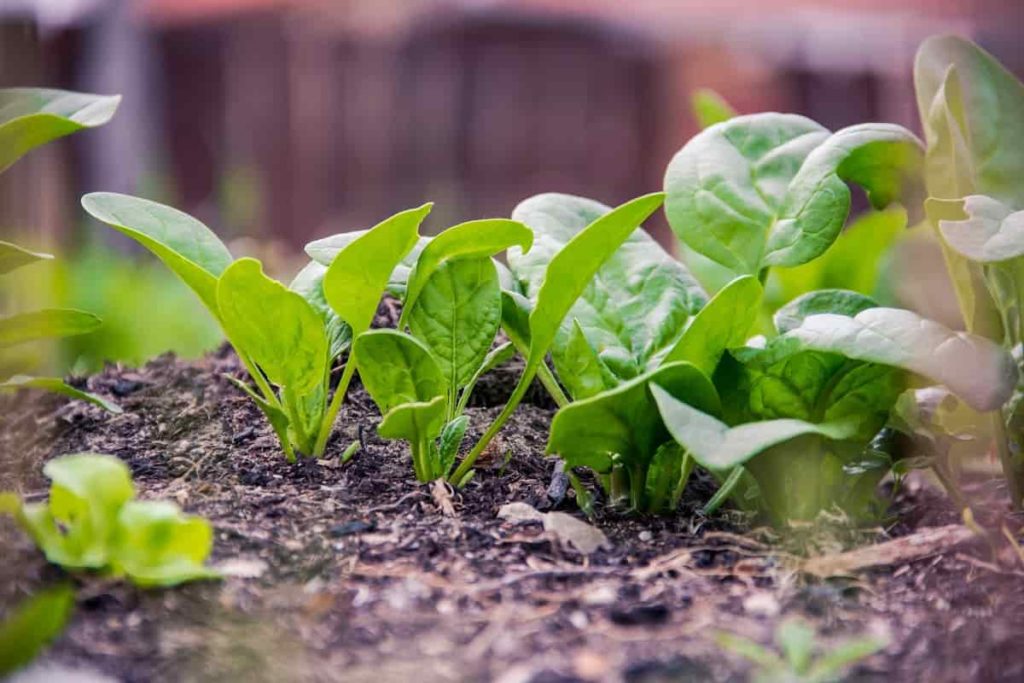
It is rich in iron and manganese and has a reasonable amount of fiber for a leaf vegetable. King of salad green, it is also a fantastic addition to most cooked food, and can even be added to the smoothies to promote extra vitamins. Spinach is a cold-weather crop and grows best in spring and fall. It can also be grown outside and indoors, provided you have enough space to accommodate it. You can determine the season of Spinach the productive age of the plant.
Most varieties of Spinach prefer cool but frost-free weather, making them most suitable as spring or fall crops in the climate. In mild winter areas, it is possible to grow Spinach from the fall during spring. Summer heat usually causes Spinach to go into seed, so spring crops are least likely to provide multiple crops. Growing Spinach from seeds is one of the many ways. There are other ways you can grow Spinach successfully, including Spinach growing from cutting. Let’s check out how to grow spinach without seeds
Types of spinach
- Savoy Spinach – As for appearance, it has very shiny leaves that are very rare, which means you have to bend down a little to clean the leaves.
- Bloomsdale – It is a well-known, thick-leafed Spinach that is quite juicy and flavors some in nature. It handles the cold very well. In addition, it produces large production during the early part of summer.
- Regiment – This plant produces large production of dark, saturated green leaves that remain soft despite maturity. This makes it easier to cook and use the plant in the kitchen.
- Semi-Savoy Spinach – It is a type that grows straighter than Savoy Spinach, which means it also stands a little straight. Also, its leaves are much less shiny, making them less of a washing problem. Finally, their biggest asset is that they are diseased and bolt resistant.
- Indian Summer – It’s a fine and productive, three-season Spinach for production in spring, summer, and fall. Its leaves are flat and fairly smooth.
- Tyee – This type of Spinach grows straight and develops vigorously. This type has dark green leaves that are bolt resistant.
- Catalina – This plant has thick leaves which are juicy and spear-shaped. It is a good type used for cooking because of the texture of its leaves.
- Smooth Leafy Spinach – It’s the same as the name suggests; with a very smooth surface that’s the easiest to clean.
- Space Spinach – When the Space Spinach is slower to bolt than most smooth lefty varieties.
- Red Carnival – Red Cardinal exhibits red veins in leaves and has a dark red stem. It bolts faster than any green-leafed Spinach and therefore must be cut young.
- New Zealand Spinach – The leaves of this plant are crisp and juicy. When you cut into them, they melt too much in your mouth.
- Malabar Spinach – This Spinach needs a lot of summer heat and a trailless climb, which will help it reach its full potential.
In case you miss this: Spinach Companion Plants, Planting Guide
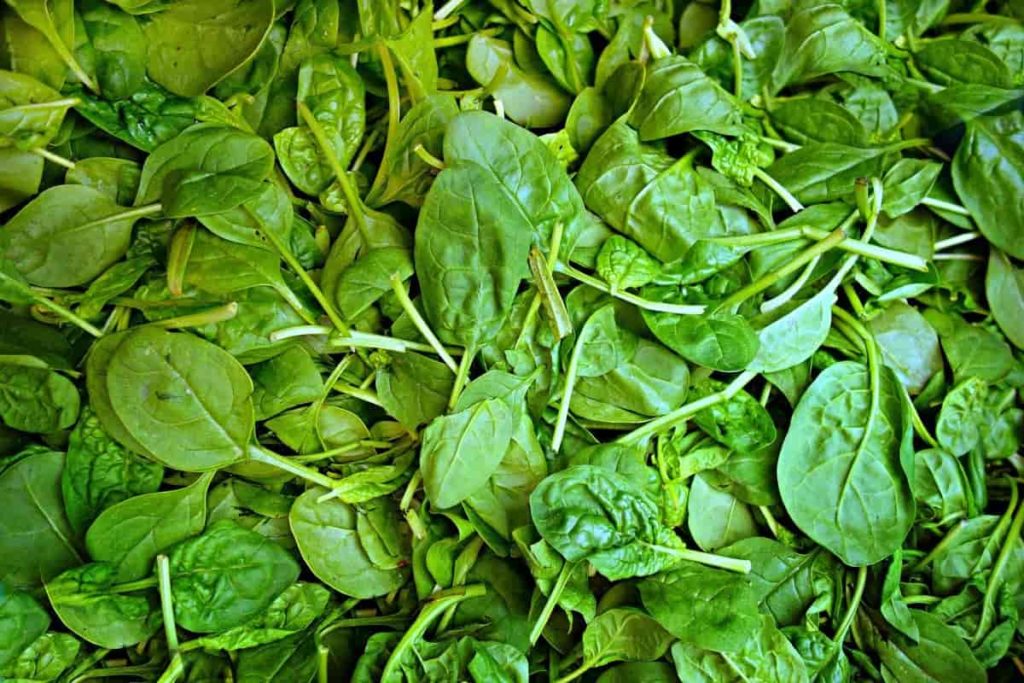
Soil requirement for growing Spinach
A week before planting your Spinach, work in some fertilizer and a slow-release, more nitrogen fertilizer soil where you will plant. This will make your plants start well. With this plant, it is better to prepare in advance than to endanger the weak plants. Well-draining soil is essential for your Spinach plants, as they will not tolerate much standing water. They also prefer soil pH in a 7.0 or slightly higher range which is slightly alkaline.
In case you miss this: Spinach Questions and Answers, Planting FAQs
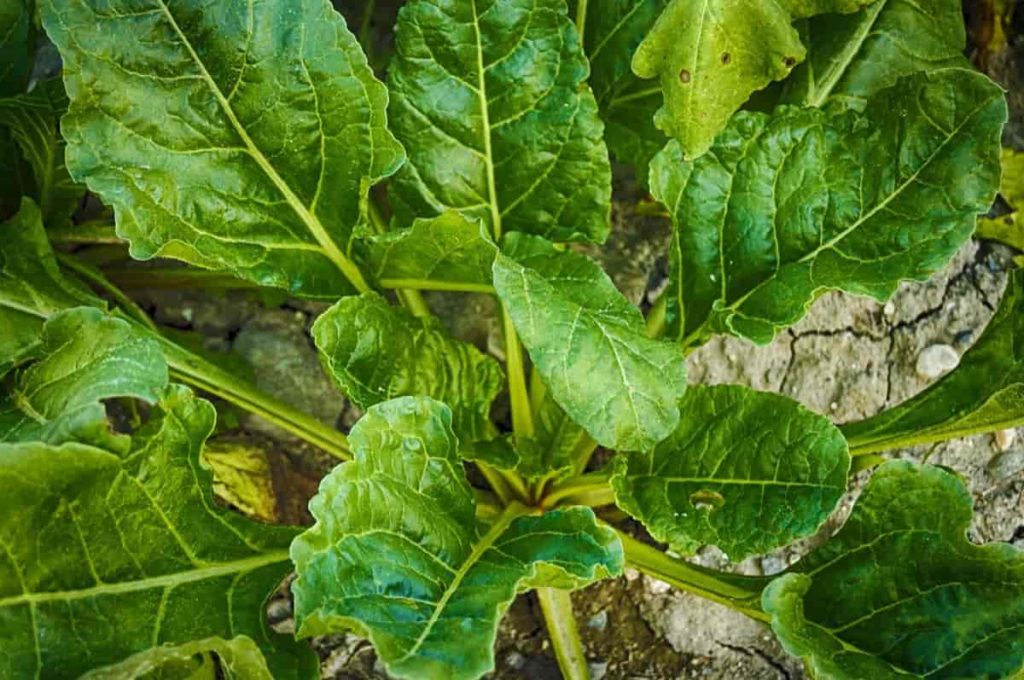
How to grow spinach without seeds (from cuttings)
- Before you prepare your Spinach cutting, you need to prepare your pot where you will plant cutting. Pick a large container at least 16 inches deep. The container should also have a wide scope. Fill the container with garden soil or potting mix. Before you add garden soil, make sure you mix in manure, chopped leaves, and add to thick sand if the soil is too compact. Mix all these ingredients well and add the mixture to the container.
- Find fresh Spinach that has intact roots. Do not use Spinach with damaged roots and withered leaves. Cut the Spinach halfway. Make sure you leave part of the stem on the roots. Dig holes in the potting mix that can accommodate the size of the roots. Insert a cut per hole. Leave 3 to 5 inches of space between the holes.
- The water gently cuts with a superior that has a fine nozzle. Keep the potting soil moist. Do not overwater. Spinach is a leafy green vegetable that doesn’t like sunlight much. So, place the container in a well-airy area that receives about 2 to 6 hours of direct sunlight.
Water requirement for growing Spinach
Constant moisture is important for Spinach. Most plants will send down a deep taproot and a large number of other thin roots. The taproot will look deep in the soil for water, but the rest of the roots also need moisture. About 1inch of water each week is ideal for Spinach, but in slightly warmer weather you would like to bump it to 1.5 inches. Regular, shallow water is better than heavy water. Slow drip irrigation or Sokar hose are great for these plants.
In case you miss this: Growing Spinach In Greenhouse – In Winter, Indoors From Seed, Polyhouse
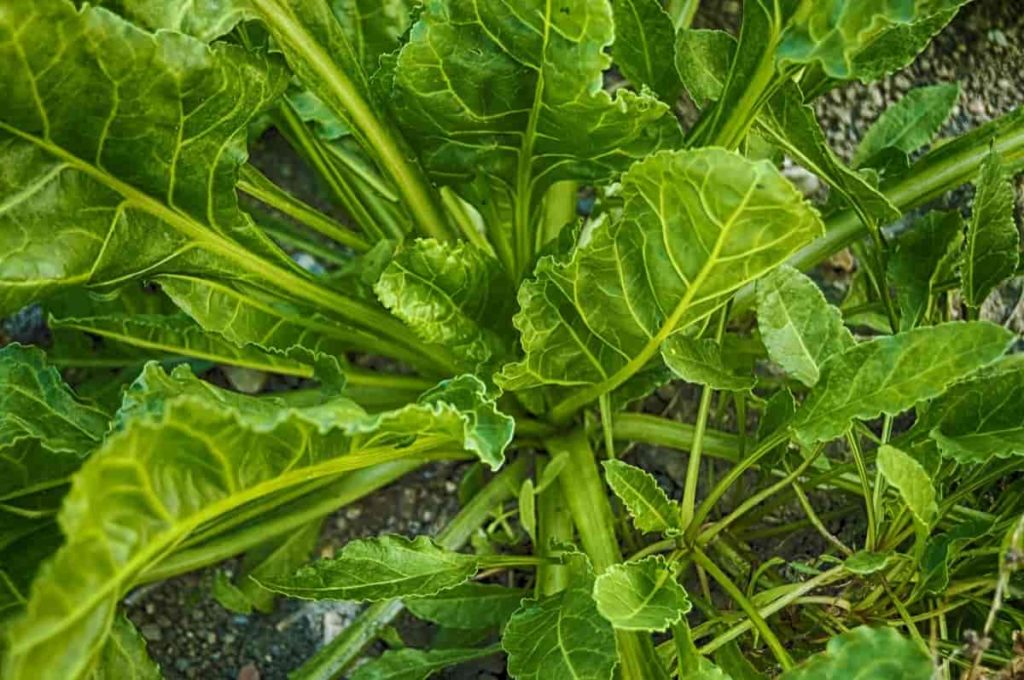
Fertilizer requirement for growing Spinach
When Spinach plants are 4 weeks long, the application of nitrogen fertilizer encourages the growth of green leaves and helps in fuel growth even after harvesting. Apply 1/4 cup of 21-0-0 manure with each 10 ft row, sprinkle it on the soil about 6 inches away from the base of the Spinach. Watering immediately after the application helps in soaking the nutrients in the soil. Regular watering of the plant throughout life ensures further regrowth. Provide Spinach with 1 inch of water every week, which is enough water to moisten the top 6 inches of soil.
Common pests and their control in growing Spinach
- The Spinach plant can be attacked by leaf miners, fungi, bolting, mosaic viruses and burns, fusarium wilt, and aphids.
- The Downy mildew that causes yellow spots on leaf levels occurs during wet weather.
- The leaf miner can produce larvae tan patches.
- Monitor the aphides regularly and remove them from the water stream.
- Place enough space between your Spinach plants for good wind circulation.
- Water the plant in the morning and do not wet the leaves.
- Spray your Spinach plant with Eco oil or insect oil to avoid damage caused by insects and moths.
- Plant disease-resistant types.
When and how to harvest Spinach
Spinach takes about 40 to 50 days to mature. Your individual preference will also determine when you harvest leaves. Some people prefer to eat small leaves, other big ones. Spinach will not last long after harvesting. The best time to eat them, for both taste and nutritional value, is immediately after picking. There are many different methods of harvesting Spinach. Check out them below.
In case you miss this: Growing Organic Spinach At Home – A Full Guide
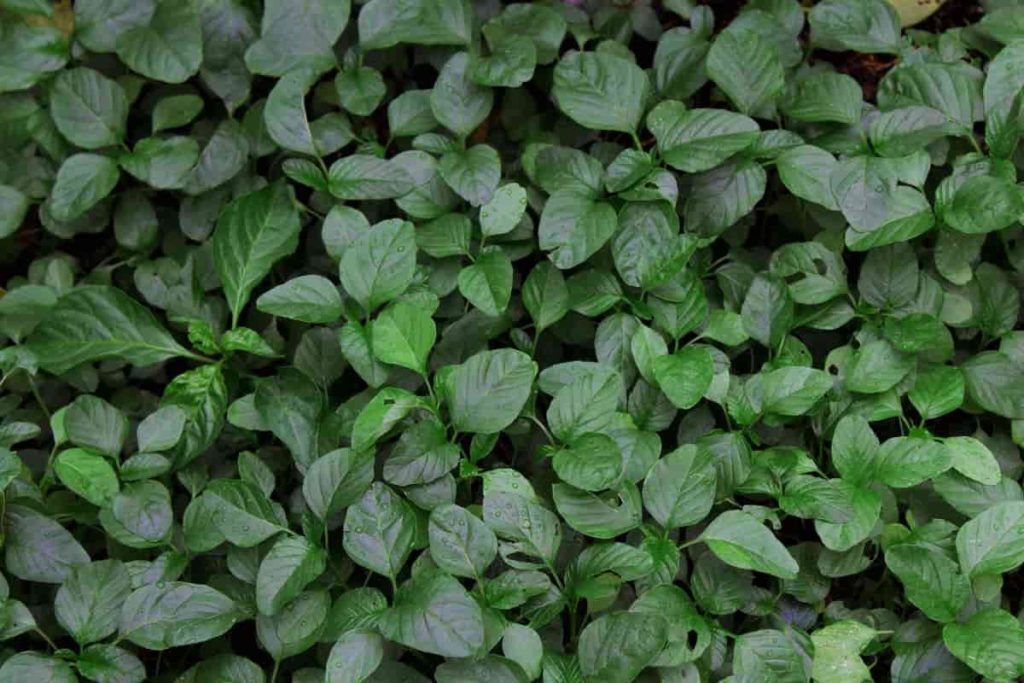
By the leaves
The first and easiest way to harvest Spinach is by leaf. All you need is a pair of scissors and a place to store the leaves you’ve picked up. Depending on your needs, you can either choose to harvest the baby’s leaves, or large, mature leaves. Just look for the leaves you want to cut, grab each leaf with one hand and cut the stem with the other.
Ensure the harvesting of about 1/3 of each plant. Once you have your Spinach cut, you just need to water and wait patiently for the next crop. Spinach leaves will grow again in just a few days. This is a great way to harvest Spinach if you want the plant to keep growing and produce new leaves, or if you just need a few leaves for a smoothie or a small dish.
Bunch
Cutting Spinach by a bunch is also known as a way of harvesting Spinach in bulk. Just collect as many leaves as possible from a plant that you can do in one hand and use a knife to cut the trunks, making sure you cut over the crown (where all the stem meets). When you use this method, you can expect to regrow new leaves about 2 weeks after the plant is harvested, so you can repeat the same process.
By plant
Another way to harvest Spinach is by the plant. This method works best when you want to clean your garden bed to apply something else, when you don’t need to grow again or before the plant swells. If new leaves that grow again start to look narrow, pointy, and a thick center stem with flower buds comes up, the Spinach is starting to set seed. Now, you can start harvesting all Spinach plants one by one. Use a knife to cut plants under the crown or get out of hand.
- How to Grow Tomatoes Organically at Home: A Comprehensive Guide
- Organic Gardening on a Budget: Low-Cost Methods and Materials
- Gongura Seed Germination and Planting Methods
- Cabbage Seed Germination and Selection
- Broccoli Seed Germination and Selection
- Asparagus Seed Germination and Variety Selection
- Seasonal Flower Gardening: Best Practices for Spring, Summer, Fall, and Winter
- How to Grow Hibiscus from Flower
- Plantation Ideas for Home Decoration: A Beginners Guide
- Flower Garden Designs and Layouts for Beginners
- Planting and Spacing Techniques in Papaya: A Beginner’s Guide
- Growing Gold: Essential Techniques for Planting Pineapples
- How to Make Kalanchoe Plant Bushy: Home Remedies and Solutions
- 11 Reasons Why Your Gardenia is Not Blooming: Home Remedies and Solutions
- Eco Elegance: The Guide to Designing a Drought-Tolerant Landscape
- Gardening on a Slope: Strategies for Hillside Landscaping
- Nourish and Flourish: Top Organic Mulches for Thriving House Plants
- Everything You Want to Know about Indian Mogra Flower: Discover Uses and Growing
- Green Thumb Success: Expert Tips for Cultivating Greenhouse Pumpkins All Year Round
- Maximize Growth & Flavor: The Ultimate Guide to Companion Planting in Herb Gardens
- How to Control Rhododendron Problems Naturally: Home Remedies and Organic Ways to Fix Them
- Natural Magic: The Remarkable Benefits of Cinnamon for Plants
- Best Steps to Revive Dying Tulip with Natural and Organic Treatment
- 10 Reasons Why Your Angel Trumpet is Not Blooming: Remedies and Treatment
- How to Fix Periwinkle Leaf and Flower-Related Problems: Natural Remedies and Solutions
- How to Fix Zinnias Leaf and Flower Problems: Discover Natural and Home Remedies
- Organic Steps to Induce Lemon Tree Flowers: A Comprehensive Guide
- Bloom Booster: Crafting the Perfect Homemade Bougainvillea Fertilizer
- Optimizing Growth: A Guide to Applying NPK Fertilizer for Potted Plants
- 10 Best Homemade Fertilizers for Rubber Plant: DIY Recipes and Application Method
- How to Boost Female Pumpkin Flowers: Effective Steps for More Flowers and High Yields
- Transform Your Indoor Garden: Top Benefits of Pink Salt for Houseplants
- 10 Best Homemade Fertilizers for Peacock Plants (Calathea): Easy DIY Guide
- Unlock Blooms: 9 Reasons Why Your Potted Chrysanthemum is Not Blooming
- 8 Reasons Why Your Potted Hibiscus is Not Blooming: Fix it with Simple Solutions
- Unlock Blooms: 9 Key Reasons Your Potted Frangipani Won’t Flower